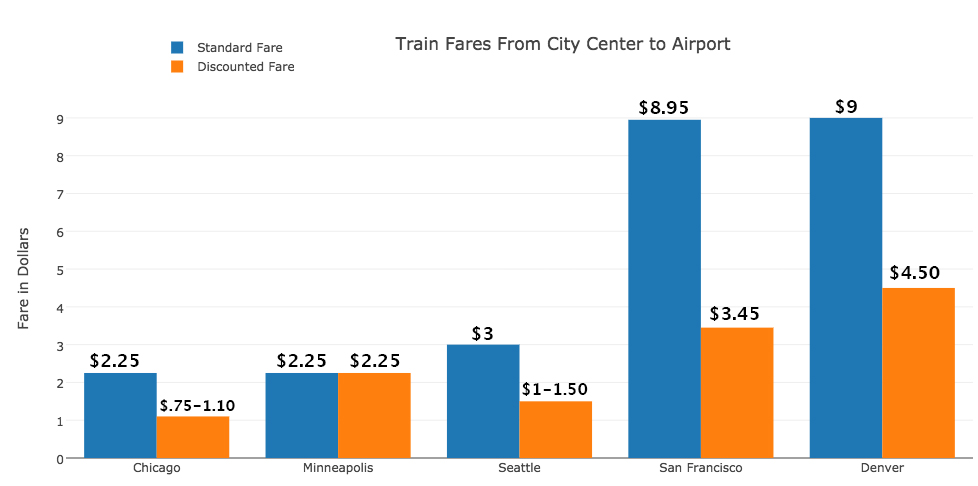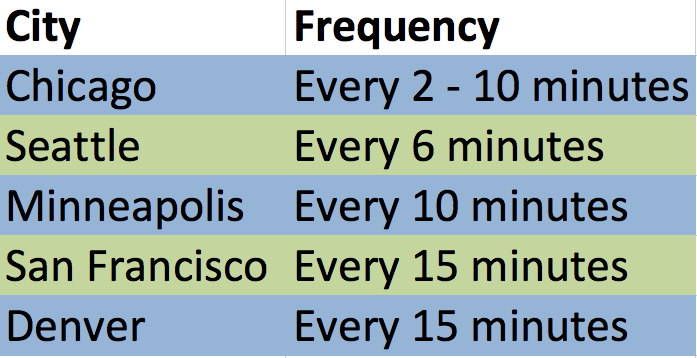How Will a Ride on the A-Line to DIA Compare to Rides in Other Cities?

A little over two weeks from now, a notorious local rite of passage will end for many: Slogging in traffic to Denver International Airport.
The A-Line from Union Station to DIA opens April 22. If all goes well, air travelers will gain a reliable way to catch the plane, and airport employees will gain an efficient commute.
Transit lines connecting downtown to the airport work best when they also connect to neighborhoods in between, providing service for other types of trips. That’s in the cards for RTD, but let’s start off by looking at the trip between downtown and the airport. How will Denver’s airport transit stack up to other cities?
Streetsblog compared the A-Line’s fares, trip time, and frequency to airport rail lines in four cities: Chicago, Minneapolis, San Francisco, and Seattle. Each comparison is based on morning rush hour trips from the city center to the airport. Here’s what they look like.
Denver’s Airport Transit Fares Are High, But Still Cheaper Than Other Modes
To be competitive with driving, transit needs to be attractive in terms of time and cost. Fares to DIA are higher than other cities’ airport fares, but even so, for most travelers from downtown transit will be cheaper than other modes, unless you’re traveling in a large party that can split the cost of gas and parking or an Uber fare.

In-Train Travel Times Are Comparable
Denver’s airport is about 24 miles from Union Station — about twice the distance as in these other cities. But RTD’s commuter train travels at 79 mph through a lot of sprawly, rural areas, making for a relatively quick ride.

The A-Line’s Frequency Isn’t So Impressive
Travel time on the train itself is not the whole story, especially when you have a plane to catch. If you miss a train, how long do you have to wait for the next one? Here’s how the frequency of service in the five cities compare:
On his blog Human Transit, transit planner Jarrett Walker says the best way to measure travel time is to add half the scheduled wait time to the advertised time spent on the train. Based on this principle, Denver’s train to the plane is about equal to Chicago’s in terms of total trip time.
While the A-Line doesn’t come out looking great, it’s still hard not to be excited about finally having a train between DIA and downtown. We’ll see soon enough how many people opt for the train instead of the car, but in the meantime, this comparison puts Denver’s service in perspective.



